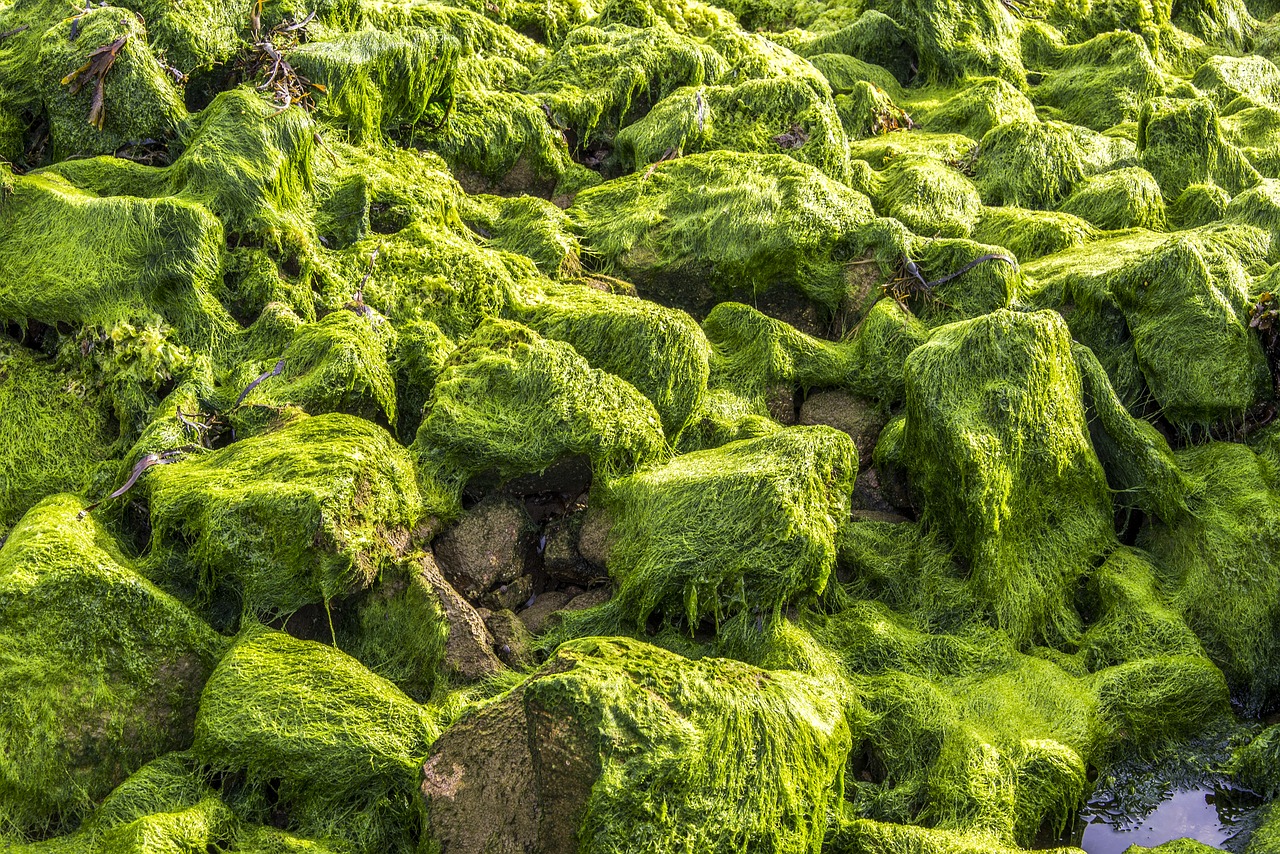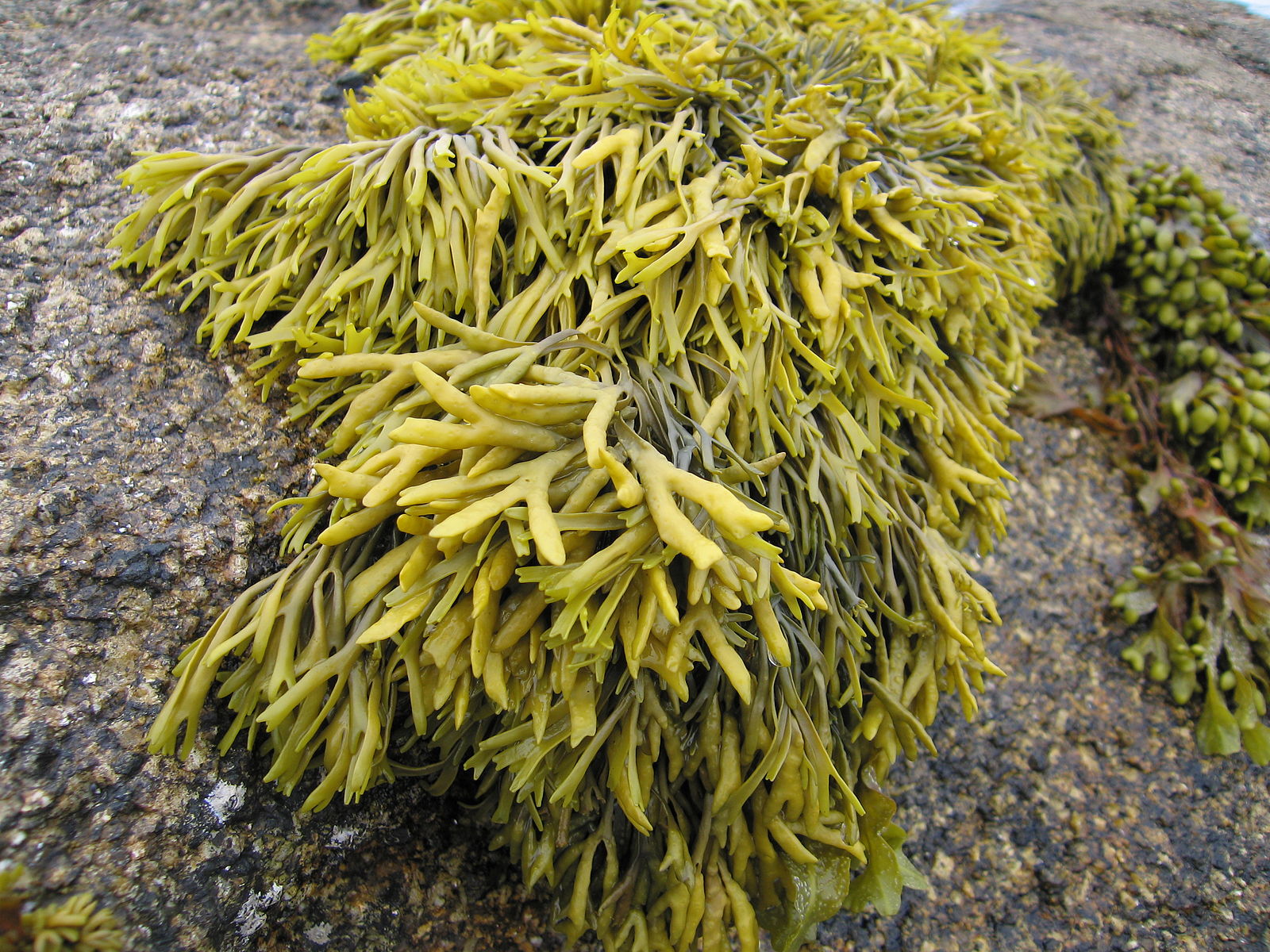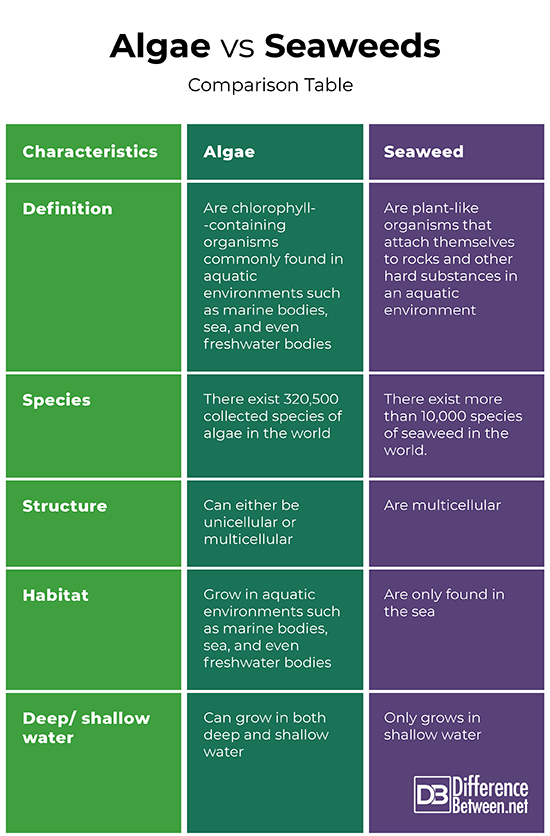Difference Between Algae and Seaweed
In the aquatic ecosystem, there exist two major plants or organism that exist in this environment. These include seaweeds and algae. Although commonly interchanged, these two may be similar in some ways but have various major differences.

What is Algae?
These are chlorophyll-containing organisms commonly found in aquatic environments such as marine bodies, sea, and even freshwater bodies. They are the most primitive organisms on earth with fossils dating back to three billion years. They mainly include prokaryotic, eukaryotes and eukaryotic organisms. They could be macroscopic or microscopic and can either have a unicellular or multi-cellular cell structure. Although there is no specific estimation on the number of algae in the entire world, there exist 320,500 collected species.

What is Seaweed?
These are plant-like organisms that attach themselves to rocks and other hard substances in an aquatic environment. They belong to the algae family. They have been useful to humankind mainly for food, industrial products, medicinal uses, and even fertilizers. Seaweeds belong to three different groups with more than 10,000 species namely, brown algae, green algae, and red algae. While green algae are common in freshwater and terrestrial situations, red and brown algae are common in marine environments.
Similarities between Algae and Seaweed
- Both inhabit aquatic environments
Differences between Algae and Seaweed
Definition of Algae vs. Seaweed
While algae are chlorophyll-containing organisms commonly found in aquatic environments such as marine bodies, sea, and even freshwater bodies, seaweed are plant-like organisms that attach themselves to rocks and other hard substances in an aquatic environment.
Species
There exist 320,500 collected species of algae in the world. On the other hand, there exist more than 10,000 species of seaweed in the world.
Structure
While algae can either be unicellular or multicellular, seaweeds are multicellular.
Habitat
Algae grow in aquatic environments such as marine bodies, sea, and even freshwater bodies. On the contrary, seaweeds are only found in the sea.
Deep/ Shallow water
While algae can grow in both deep and shallow water, seaweed only grows in shallow water.
Algae vs. Seaweeds: Comparison Table

Summary of Algae vs. Seaweed
While seaweed is a type of algae, the two have major differences, in terms of history, the range of species, habitats, and even the cellular structure. While algae grow in marine bodies, the sea, and even fresh waterbodies, seaweeds only grow in the sea.
- Difference Between Profit Center and Investment Center - July 2, 2022
- Difference Between Anti-Trust and Anti-Competition - June 6, 2022
- Difference Between Stocktaking and Stock Control - June 6, 2022
Search DifferenceBetween.net :
 Email This Post
: If you like this article or our site. Please spread the word. Share it with your friends/family.
Email This Post
: If you like this article or our site. Please spread the word. Share it with your friends/family.
1 Comment
Leave a Response
References :
[0]Mouritsen J & Mouritsen O. Seaweeds: Edible, Available, and Sustainable. University of Chicago Press Publishers, 2013. https://books.google.co.ke/books?id=8BFIfxX_x_UC&printsec=frontcover&dq=Difference+between+algae+and+seaweed&hl=en&sa=X&ved=0ahUKEwiAjp_Q3__gAhWM1-AKHRIBDfEQ6AEIOTAD#v=onepage&q=Difference%20between%20algae%20and%20seaweed&f=false
[1]Dawes Clinton. Marine Botany. John Wiley & Sons Publishers, 1998. https://books.google.co.ke/books?id=IHGIL7az7p0C&pg=PA113&dq=Difference+between+algae+and+seaweed&hl=en&sa=X&ved=0ahUKEwiAjp_Q3__gAhWM1-AKHRIBDfEQ6AEIVzAI#v=onepage&q=Difference%20between%20algae%20and%20seaweed&f=false
[2]Lobban C, Bischof K & Hurd C. Seaweed Ecology and Physiology. Cambridge University Press, 2014. https://books.google.co.ke/books?id=rZDfAwAAQBAJ&pg=PA27&dq=Difference+between+algae+and+seaweed&hl=en&sa=X&ved=0ahUKEwiAjp_Q3__gAhWM1-AKHRIBDfEQ6AEIMTAC#v=onepage&q=Difference%20between%20algae%20and%20seaweed&f=false
[3]Image credit: https://commons.wikimedia.org/wiki/File:TomCorser_Seaweed_2.jpg
[4]Image credit: https://pixabay.com/photos/algae-green-brittany-plant-colors-2484265/


I enjoyed your article, but would have been led astray a bit if I had not just read some other articles which defined ‘kelp’ (my original search) more clearly.
Please check your article’s opening statement:
“In the aquatic ecosystem, there exist two major plants or orgasms that exist in this environment.”
Since seaweed is a subset of algae, you cannot really say ‘two’, they are not plants (it would be more accurate to stick to plant-like as you have done later in the article), and I sincerely doubt that any such organisms have orgasms?